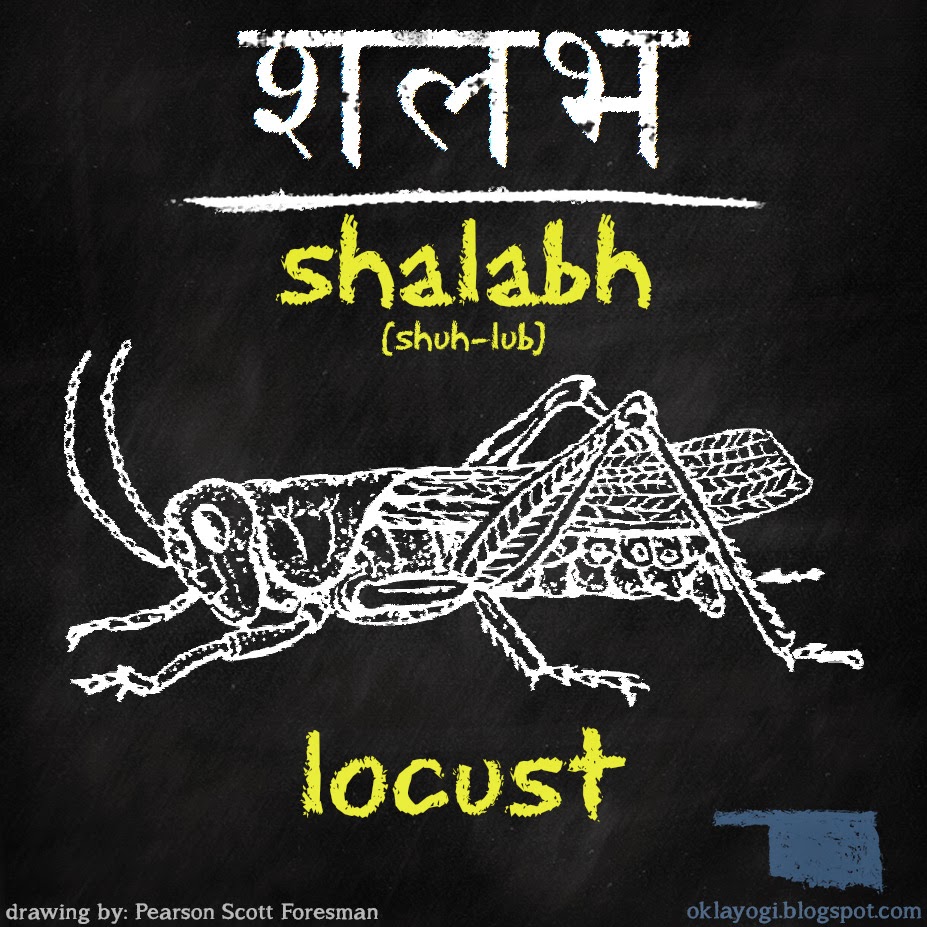Today's word is वृश्चिक. It's pronounced vrush-chick in English and means scorpion.
 You see the word used in combination with असन (asana, or pose) to make वृश्चिकासन vrschikasana, or scorpion pose. We spell it like "vrs" but it's pronounced like "vrush."
You see the word used in combination with असन (asana, or pose) to make वृश्चिकासन vrschikasana, or scorpion pose. We spell it like "vrs" but it's pronounced like "vrush."
Isn't the Sanskrit writing beautiful?
The "r" sound in this word is considered a vowel in Sanskrit. Crazy, right? In linguistics terms, the sound is a syllabic r and is an allophone of our r sound. Say it with me – vrschikasana. Vrschikasana!
Vrschikasana is an advanced arm balance backbend pose and requires a lot of core and shoulder strength. It's very challenging! There's an excellent journal article for Scorpion Pose on Yoga Journal. My advice is to try feathered peacock (pincha mayurasana) first and then work into Scorpion using the wall.
Thanks for reading. You've got another Sanskrit word under your belt! For tips on learning how to read and write in Sanskrit in its native script, read my post here.
Thank you! Until next week.
नमस्ते,
Tyler
 You see the word used in combination with असन (asana, or pose) to make वृश्चिकासन vrschikasana, or scorpion pose. We spell it like "vrs" but it's pronounced like "vrush."
You see the word used in combination with असन (asana, or pose) to make वृश्चिकासन vrschikasana, or scorpion pose. We spell it like "vrs" but it's pronounced like "vrush."Isn't the Sanskrit writing beautiful?
The "r" sound in this word is considered a vowel in Sanskrit. Crazy, right? In linguistics terms, the sound is a syllabic r and is an allophone of our r sound. Say it with me – vrschikasana. Vrschikasana!
Vrschikasana is an advanced arm balance backbend pose and requires a lot of core and shoulder strength. It's very challenging! There's an excellent journal article for Scorpion Pose on Yoga Journal. My advice is to try feathered peacock (pincha mayurasana) first and then work into Scorpion using the wall.
Thanks for reading. You've got another Sanskrit word under your belt! For tips on learning how to read and write in Sanskrit in its native script, read my post here.
Thank you! Until next week.
नमस्ते,
Tyler




.jpg)